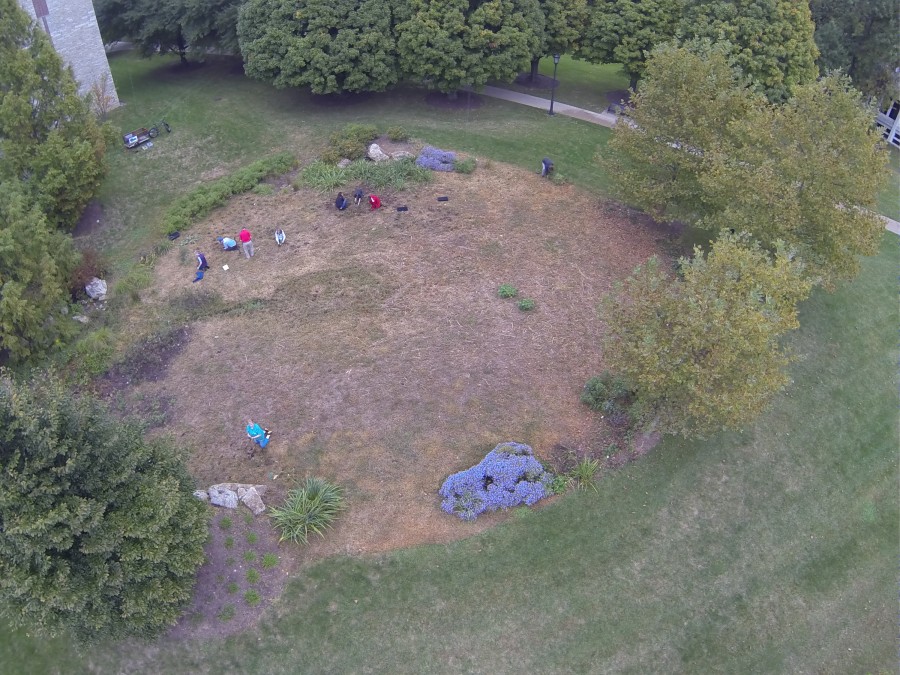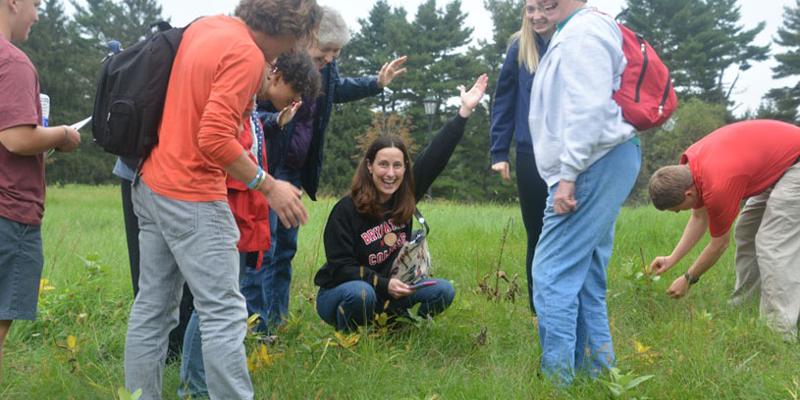On Saturday, October 8, about twenty-five people were digging in the dirt, placing 1,000 plugs of various plants into the rain garden space between the Doering Science Center and Tomlinson Road. This large planting blitz was part of a workshop arranged by Bryn Athyn College and presented by Scott Quitel from the Land Health Institute. There were about ten BAC students in attendance, with the rest of the group comprised of professors and interested community members.
The rain garden was until recently, not, in fact, a rain garden. I order to be classified as such, a rain garden must be able to absorb most rainfall events, thereby protecting water quality and reducing storm water runoff from developed areas. For years after the completion of the Doering Center construction, the space did not drain properly. This was expected for the time immediately following construction, as the subsoil sediment dredged up from the building process routinely sank into the bottom of the basin, not allowing rainwater to percolate deeper. During those years of poor drainage, weeds and grasses sprang up, and then were cut down, and so on, introducing organic matter to the environment. This finally allowed the ecology of the soil to reestablish so that the hydrology of the ground is now working as it should, which means that it drains within 48 hours after a rain event.

Bryn Athyn College Facilities Assistant, Micah Alden, has been working on the rain garden for years. He has kept an eye on the drainage progress and planted asters, milkweed, bee balm, Echinacea, hibiscus, and other native plants as he found the resources to do so. Thanks to an anonymous donor, Micah was able to give this project a major push forward through the workshop and the buying of plants needed to round out the garden design.
Some of these new plants include blue mist flower, Emory’s sedge, beardtongue, and mountain mint, among others. There are 300 milkweed plants on order for planting in May, which are crucial for the survival of monarch butterflies that have seen a drastic reduction in population in recent years. Various species of milkweed provide the food and therefore the chosen location for monarch caterpillars to complete their metamorphoses into butterflies. Once an adult the monarch will need ample nectar, hence the planting of native flowering plants in monarch way stations. Of course, the butterflies overwinter in Mexico, which is why we call these gardens way stations- they are on the migratory path of these beautiful insects. While we may only get them for part of the year, it certainly is a treat to see the creatures fluttering about with their majestic wings.
In a perfect coincidence, the workshop took place on a cloudy day that naturally dropped some rain onto the newly planted flowers. Micah reports that the planting was successful- that none of the new arrivals are showing any signs of transplant stress. Because they were in plug form rather than seeds or seedlings, these plants will quickly establish and be fully grown in just a matter of months. In addition to the milkweed slated for a spring arrival, Micah eagerly awaits the new signage to be installed by the rain garden. The signs will mark the area as an official natural habitat and monarch way station, and they will include information and explanations of the rain garden ecosystem.
